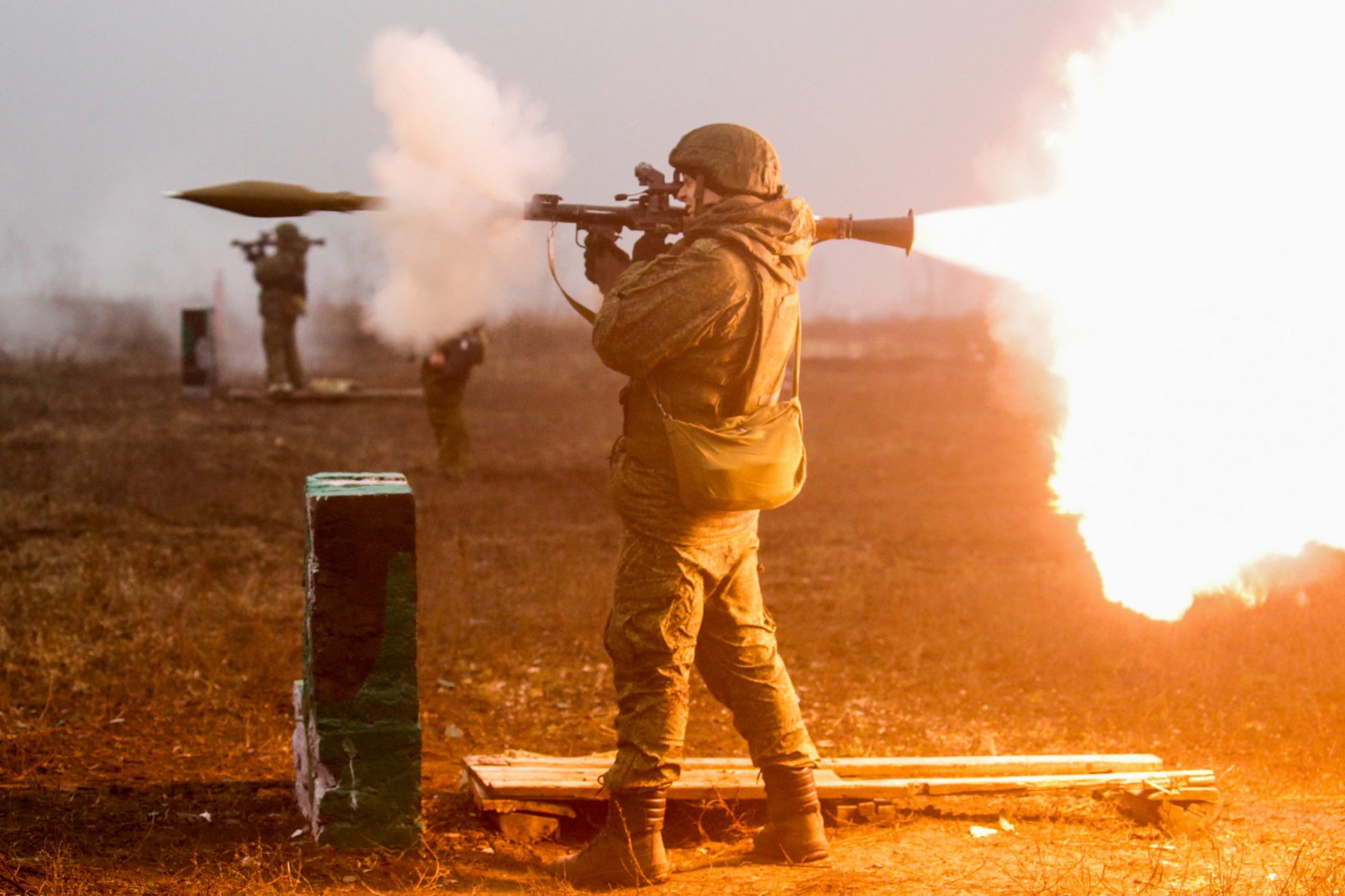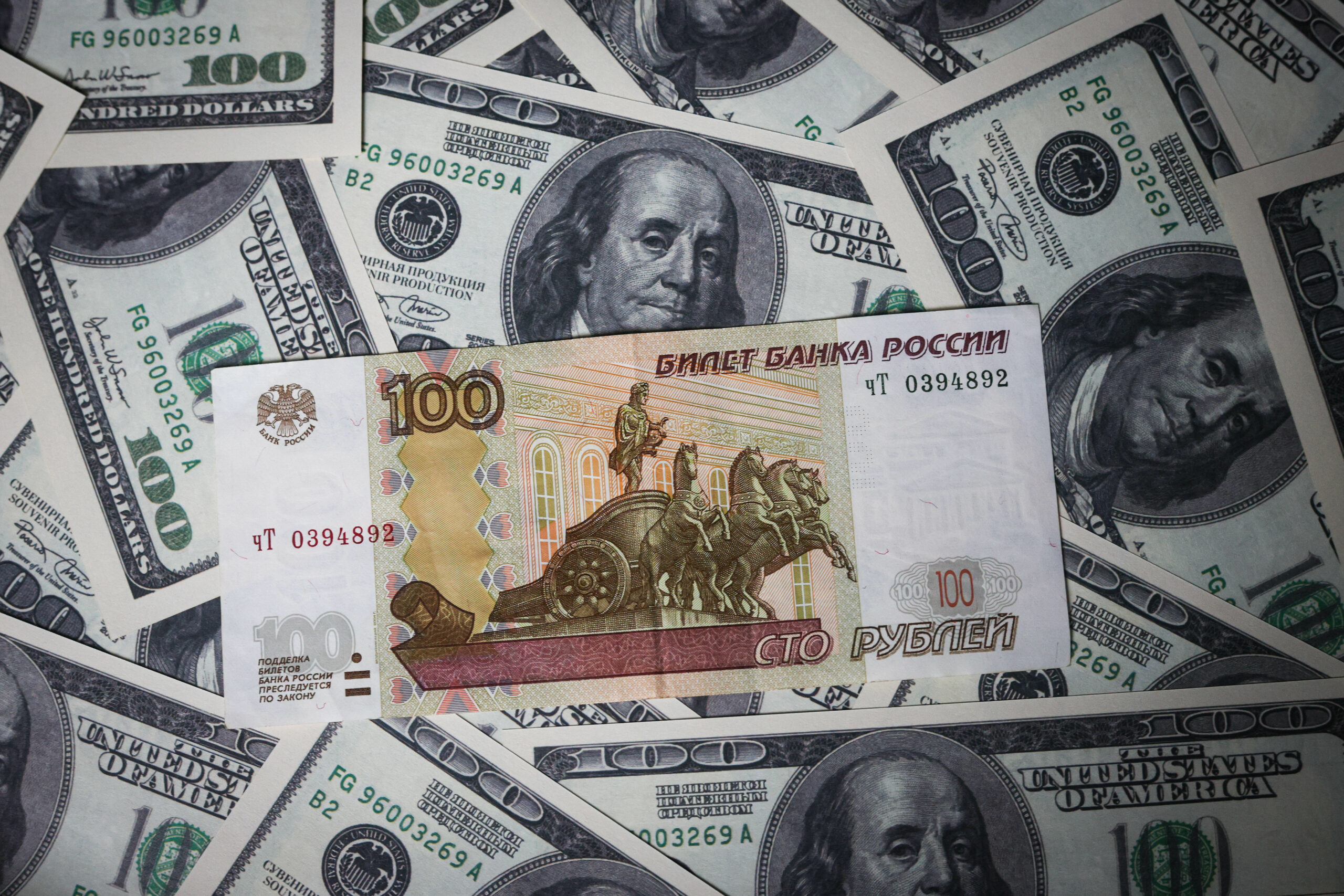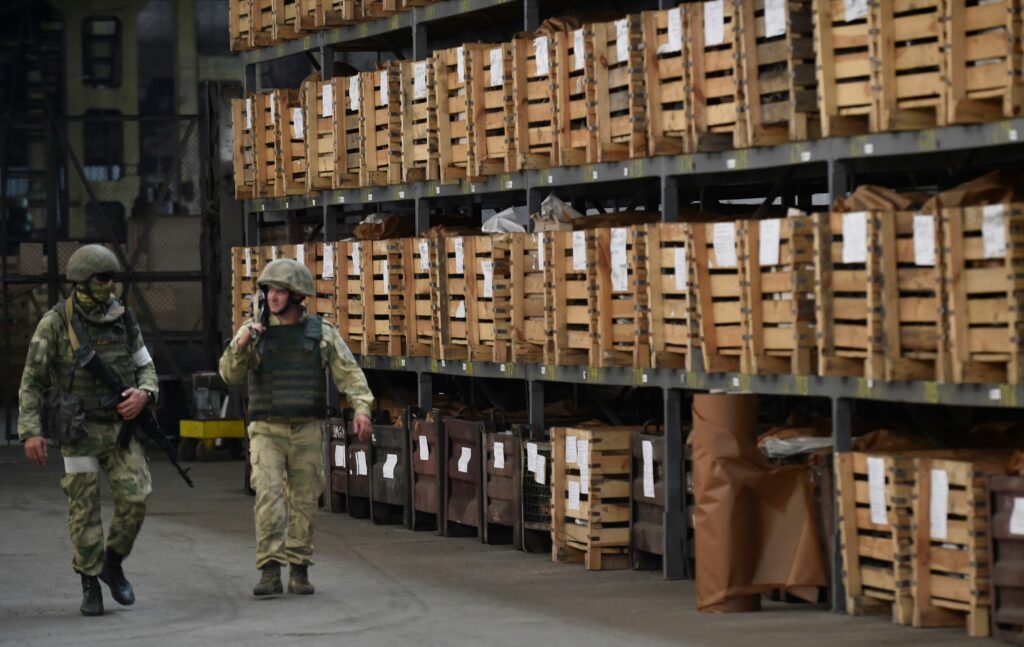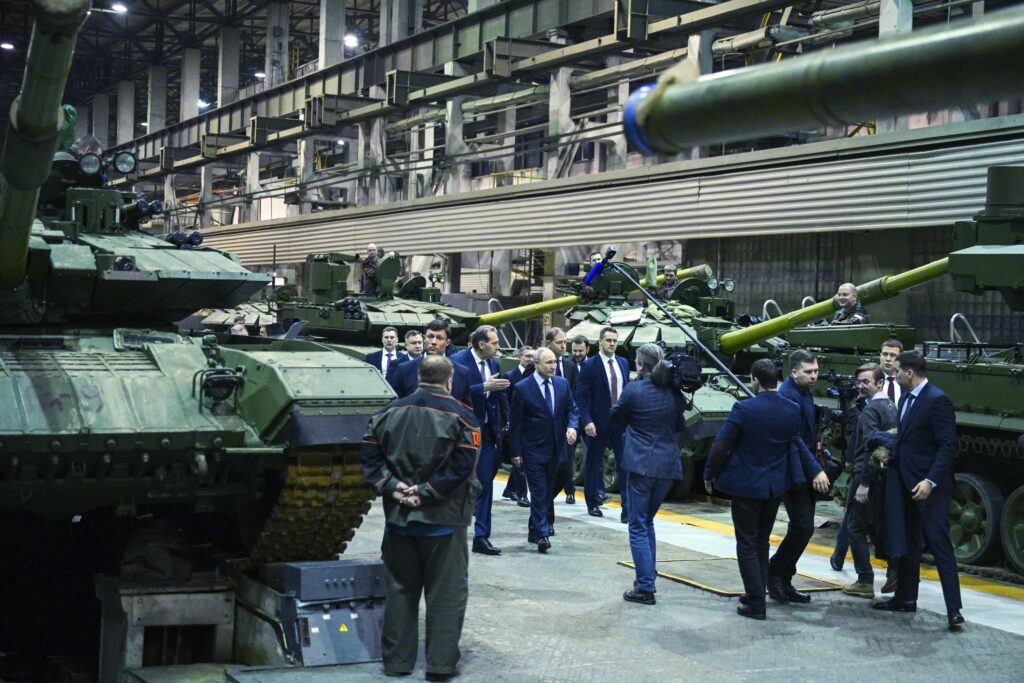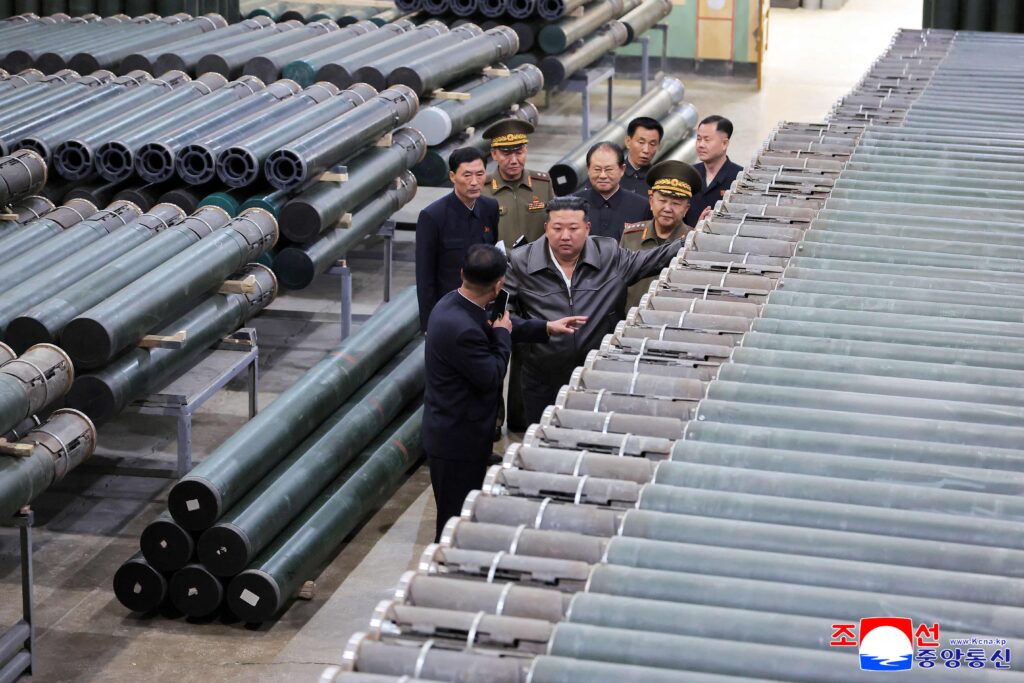All is not well within the Russian armed forces. The Kremlin’s coveting of a million-strong army at any cost, its distrust towards its own military, and the latter’s high staff turnover are just some of the problems which have led to this state of affairs. But another is no less important: the Russian army has simply reached hit a technological ceiling, and reached the limit of its ability to participate in modern conflicts.
The Russian authorities are reaping the benefits of their military reforms of 2009-2012, the theoretical basis for which had already been developed by the late 1980s. However, these reforms still have yet to be fully completed, particularly in the field of military education. And although the army’s multi-billion dollar rearmament programme has had to contend with the limited potential of Russia’s domestic military industry, the latter turned out to be sufficient to wage campaigns in Ukraine and Syria.
But today, Moscow has already started to feel the limitations of its military capabilities. This is primarily due to the disconnect between the technical and organisation state of the country’s armed forces, as well as their poor readiness for urban combat, where most modern warfare is conducted. Therefore, over the coming decade, Russia will have to make decisions about how to further develop its military. An important factor in that will be the political processes between 2021 and 2024. These years will be key: the Russian authoritarian system will have to formulate the future basis for its continued hold on power. Whatever decision the country’s rulers reach, it will have important consequences for the future trajectory of the armed forces.
An Achilles’ Heel
For a long period of time the Russian army, just like its Soviet predecessor, has suffered due to a lack of effective communications and management systems. As a result of the 2011 rearmament programme (known as GPV-2020), the army received tens of thousands of sets of communications equipment, ranging from individual radio sets to mobile and fixed communications devices, including computerised systems allowing for troop command and control at various levels. Behind all these efforts stood the National Defence Management Centre, founded in Moscow. The centre receives and processes information and directs armed units on a strategic level. It also played a role in the upgrade of the place of military communications within Russia’s space programme, which led to the deployment between 2017 and 2019 of the four Blagovest geospatial satellites, the most advanced Russian communications devices constructed using European components.
All these efforts have significantly improved the Russian armed forces’ capacity for and quality of command and communications. That change has been tangible, at least during the military campaign in Syria. Nevertheless, as far back as 2017 it was becoming apparent to the Russian military leadership that even these improvements were insufficient to guarantee success in modern warfare. For example, an article co-authored by Colonel-General Sergey Surovikin, the current head of the Russian military’s Aerospace Forces and former commander of Russia’s forces in Syria, declared that the military’s main problem was the “deep disconnect between its organisational and technological development,” which complicated its ability to meet its goals. In other words, the effectiveness of the Russian military’s improved means for command and communication, as well as its new armaments, which it has acquired over the past nine years has been hampered by the existing approaches taken to the training of officers and junior commanders in the armed forces. That is to say, the military’s decision-making system has turned out to be an important obstacle to its success.
The rejection of reforms to military education, the suppression of all initiative from the rank and file, and increasing delegation of responsibility to the top of the command chain, have all led to the logical end result. So too has the military leadership’s focus on battlefield combat, featuring combined formations of various military units, whose soldiers and officers have nothing to do with each other in peacetime. In sum, such speedy decision making, not to mention the quality of the decisions taken, has not satisfied Russia’s military leaders. Although they are very aware of the need for “fundamentally new approaches to managing information processes in the command and control system, and developing control methods which will guarantee the optimum realisation of troops’ combat capabilities,” the solution to this problem clearly lies beyond the political remit of Minister of Defence Sergey Shoigu and his assistant. The Russian government is not only not ready for a new round of military reforms; the military’s need for new management could cast doubt on the longevity of the entire political structure of modern Russia.
It’s clear that one way of compensating for these deficiencies in control and communications could simply be to focus on counteracting the same systems in hostile armies. This is precisely why, over the past decade, Moscow has focused on developing its electronic warfare systems. Across Russia’s military districts, electronic warfare brigades and battalions have already been significantly revamped with new equipment and conducted numerous exercises. As Russia’s military leadership sees it, the experience of military campaigns in Ukraine and Syria has proven the worth of these efforts, prompting great concern in the West.
However, in this field the Russian leadership faces a particular problem: the country is armed with a multitude of additional electronic warfare systems which must constantly be updated and improved, combined and enhanced, in order to prolong their service life. Therefore, the question of modernising and replacing the systems which entered service in 2013-2015 is now on the agenda. Thus the advantages Russia now enjoys in the field of electronic warfare, in the context of an international technological race, will not be too long lasting. They certainly are not a reason for the leadership to ignore the more serious underlying problems in the management of the country’s armed forces.
A war beyond the cities
It is important to remember that in the course of all their military campaigns, the Russian armed forces have experienced their heaviest losses when fighting in cities. Over three months of fighting in Grozny, in Chechnya during the First Chechen War, 1,426 Russian soldiers were killed, 4,630 wounded, and 96 taken prisoner. In the space of a week, over 80 were killed during fighting in the Chechen city of Gudermes alone. During the five day Russo-Georgian War of 2008, 46 of 67 were killed in Tskhinvali and Gori. The war in eastern Ukraine, in battles at Ilovaisk, Debaltseve, and the Donetsk airport, has claimed the lives of over 1,000, although it today it is impossible to clearly separate the losses of local militants from those of Russian soldiers. This is not to mention the ongoing military engagement in the cities of Syria. The largest such urban conflict for the Russian army took place in Grozny, a city with a population of 350,000 in 1994-1995. The siege of Marawi in 2017 is a revealing comparison; it is similar to Grozny in size. During their five month fight to free the city from Islamist militants, the Philippine army lost 168 soldiers. More than a thousand were wounded.
For its part, the Russian army has been unable to learn from Soviet era military experience of urban warfare. After all, the urban environment has become predominant in recent decades as cities have grown. Furthermore, the Soviet approach to urban combat was developed during the Second World War; that experience was cost thousands of casualties, and was barely updated or revisited during subsequent conflicts and military operations. Moreover, the historic practice of the victor razing vanquished cities to the ground during combat remains a historic practice; the size of cities today makes their destruction too high a price to pay for the conqueror, which must often pay for their reconstruction. Although some lessons were learned a few years before the military reforms of 2009-2012, they have not been acted upon: to this day, the Russian armed forces only maintains only a handful of military formations which are well prepared for urban combat.
Major Russian army exercises of recent years indicate that the military is prepared to fight a battle on rough terrain, but not in cities. On the whole, the Russian military has a poor idea of what to do with the cities it captures: they are not prepared to put too much work into restoring their economic livelihood nor in building good relations with the local inhabitants. Those tasks frequently fall on the shoulders of other state institutions (such as the Chechen authorities) or local leaders and troops loyal to Moscow (as in the case of Chechnya or South Ossetia.) When it comes to the Syrian campaign, it is clear that the Russian military is capable of removing mines from urban areas, assist in the reconstruction of critical infrastructure such as bridges, and deliver small amounts of humanitarian aid. But Russia still relies on ethno-confessional formations which are religiously and culturally closer to the local population, as well as, in some cases, historical ties to local diaspora communities. Thus Russia has only a limited ability to maintain order in a few specific areas of Syria. In fact, this situation has recently led some in the Russian military to raise concerns that, in its current form, the army is poorly prepared for a urban war.
For the time being, it cannot be said that, after seizing a city and razing it to the ground, the Russian military is ready to take advantage of the fruits of its victories in other ways. They simply have no specialists who can assist in building connections with the local population, community leaders, and refugees, establishing order in these cities and restoring a semblance of peaceful life to them. Here the problems of military organisation and management combine with the fact that Russian officers’ training in the field of humanities leaves much to be desired.
In this sense, the Russian authorities’ efforts to create an armed force ready to successfully cope with the challenges of modern conflicts do not properly take into account the material, socioeconomic, and political realities of modern cities — places where such an army will increasingly have to operate. In fairness, these contradictions are not yet clearly apparent. But the fact of the matter remains that, with the exception of special operations forces and military advisers in Syria, the Russian armed forces have generally tried to avoid land engagements in large cities during the military campaigns of recent years.
Nevertheless, the methods of Russia’s collaboration with the armies of Bashar Al-Assad in Syria, and the crimes they have committed in Idlib Province, demonstrate that Moscow has no clear understanding how or with whose help to restore today’s destroyed cities. Accordingly, the Russian authorities appear to have no understanding of how to guarantee the continued political and economic existence of a country for whose future they have officially maintained a military intervention for the past five years. In neighbouring Iraq, members of the international coalition have at least been able to establish foundations to oversee reconstruction of devastated areas — even while the US has distanced itself from such efforts.
In relying on local allies, proxies, and mercenaries to win their urban battles, the Russian authorities then delegate responsibility to their helpers. At the same time, Moscow relinquishes its political and moral responsibility for what takes place on the ground, while the results of its military campaigns come to depend to an even greater extent on the reliability and competency of these aforementioned groups. In short, the effectiveness of Russia’s armed forces in modern conflicts is limited not only by its internal organisational and technological problems, but also by the goals, methods, and even intellectual resources available to those on whom the Kremlin pins its political hopes. With such an approach, the Russian army may be able to win a battle, but it will never win the war.
